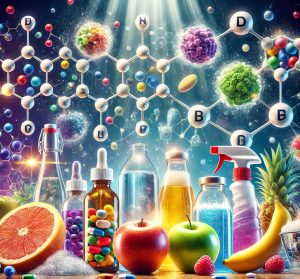Tissue culture, also known as plant cell culture or micropropagation, refers to the technique of growing plant cells, tissues, or organs in a sterile, nutrient-rich medium under controlled conditions. This method has revolutionized the field of plant biology and agricultural biotechnology, offering an array of benefits for food production. By using tissue culture techniques, scientists and agronomists can produce plants with enhanced qualities such as increased yield, disease resistance, stress tolerance, and improved nutritional content. Furthermore, tissue culture enables rapid multiplication of plant species, the conservation of endangered plants, and the development of genetically modified crops.
This article explores the various tissue culture strategies used to enhance food production, the benefits and limitations of the technique, and its role in addressing global challenges such as food security and climate change.
1. What is Tissue Culture?
Tissue culture refers to the technique of growing plant cells or tissues in a sterile, controlled environment that mimics natural conditions for growth. This involves isolating a small piece of plant tissue (often a shoot, leaf, or root), placing it in a nutrient medium that supplies the necessary nutrients, hormones, and growth factors required for cell division, and allowing it to grow into a full plant. The process can be used to propagate a wide range of crops and plants with desirable traits.
Key components of tissue culture:
- Sterility: Tissue culture requires a sterile environment to prevent contamination by bacteria, fungi, or other pathogens.
- Nutrient medium: A gel or liquid medium containing water, essential minerals, vitamins, and plant hormones (auxins and cytokinins) that stimulate cell growth and differentiation.
- Controlled environment: Temperature, light, and humidity are regulated to optimize growth and development.
2. Major Tissue Culture Techniques Used in Food Production
Several tissue culture techniques are commonly employed to enhance food production, each with unique advantages for producing improved crops:
a) Micropropagation
Micropropagation is the process of rapidly multiplying plants from small pieces of tissue, often called explants, to produce genetically identical offspring. This technique is particularly valuable for producing large numbers of plants in a short time.
- Application: Micropropagation is commonly used to propagate elite or hybrid varieties of crops like potatoes, bananas, sugarcane, and ornamental plants. It helps ensure uniformity in plant growth and disease resistance.
- Advantages:
- Rapid multiplication: Plants can be propagated at a much faster rate than traditional methods like cuttings or seed propagation.
- Disease-free plants: Micropropagation allows for the production of disease-free planting material, which is particularly beneficial in the case of crops susceptible to viruses or bacterial infections.
- Uniformity: Since the plants produced are clones, the traits of the parent plant (such as size, yield, and disease resistance) are consistently passed on.
b) Somaclonal Variation
Somaclonal variation refers to the genetic variation observed in plants regenerated from tissue culture, which can be induced by the culture process itself. This variation can lead to the development of plants with desirable new traits.
- Application: Somaclonal variation can be used to develop crops with improved resistance to diseases, pests, or environmental stress, or even crops with enhanced nutritional content.
- Advantages:
- New traits: It provides a source of genetic variation that can be exploited for crop improvement.
- Faster breeding: Somaclonal variation allows breeders to generate new plant varieties more quickly than traditional breeding methods.
c) Protoplast Fusion and Somatic Hybridization
Protoplast fusion involves the fusion of plant cells that have had their cell walls removed (protoplasts) to create hybrid cells. This process can be used to combine the genetic material from two different plant species or varieties.
- Application: Protoplast fusion can be used to create hybrid plants that combine beneficial traits from both parent plants, such as high yield and disease resistance.
- Advantages:
- Wide genetic diversity: It can cross species that are not sexually compatible.
- Hybrid vigor: The resulting hybrids often exhibit improved traits, such as higher yield, better stress resistance, and improved nutritional quality.
d) Genetic Transformation (GM Crops)
Genetic transformation involves inserting foreign genes (often from a different species) into a plant’s DNA. This allows for the introduction of specific traits, such as resistance to pests, tolerance to herbicides, or improved nutritional content.
- Application: Genetic transformation is used to produce genetically modified (GM) crops like Bt cotton (resistant to pests), Roundup Ready soybeans (resistant to herbicides), and Golden Rice (enhanced with beta-carotene for improved nutrition).
- Advantages:
- Precision: Specific traits can be introduced without affecting the overall genetic makeup of the plant.
- Improved traits: Genetic modification can enhance disease resistance, drought tolerance, and nutritional quality.
3. Applications of Tissue Culture in Food Production
Tissue culture techniques have widespread applications in agriculture, particularly in enhancing food production and improving the quality of crops. Some of the major applications include:
a) Increased Crop Yield
One of the main advantages of tissue culture is its ability to produce crops that yield more food per unit of land. This can be achieved through several approaches:
- Hybrid varieties: Tissue culture allows the development of hybrid varieties with improved yields by exploiting the genetic potential of diverse parent plants.
- Disease resistance: Tissue culture techniques can be used to select plants that are resistant to diseases, which helps in maintaining or increasing yield even under adverse conditions.
For instance, tissue culture has been used to propagate high-yielding varieties of crops like bananas, potatoes, and sugarcane, contributing significantly to global food production.
b) Plant Cloning and Uniformity
Tissue culture is widely used for the cloning of superior plants. Cloning ensures that each plant produced is genetically identical to the parent, resulting in uniformity in terms of growth, yield, and other desirable traits.
- Application: Crops like bananas, pineapples, and potatoes, which are typically propagated through vegetative methods, benefit from tissue culture cloning, ensuring uniformity in plantation and harvest.
- Benefits: Cloned plants grow at the same rate, mature simultaneously, and provide a more predictable harvest, which is crucial for large-scale food production.
c) Conservation of Endangered Species
Tissue culture is also used for the conservation of endangered plant species, many of which are important for food production or have nutritional and medicinal value.
- Application: Rare or endangered crops such as wild rice, wild potatoes, and other native crops can be conserved through tissue culture. This allows for the maintenance of genetic diversity and the potential for reintroduction of these plants into their natural habitats.
- Benefits: This helps preserve biodiversity and ensures the continued availability of important food sources.
d) Production of Disease-Free Plants
Tissue culture offers an efficient way to produce disease-free plants, especially in crops that are susceptible to viral and bacterial diseases. By using techniques like meristem culture (culturing the tip of the plant shoot), which is free from pathogens, disease-free plants can be produced.
- Application: Crops like bananas, potatoes, and grapevines that are susceptible to various diseases benefit greatly from tissue culture methods to produce clean, healthy planting material.
- Benefits: Disease-free plants reduce the need for chemical treatments and improve overall crop health, which is critical for enhancing food production.
e) Improvement of Nutritional Quality
Tissue culture can be used to enhance the nutritional content of crops by selecting or developing plants with higher concentrations of essential nutrients such as vitamins, minerals, or proteins.
- Application: One well-known example is the development of Golden Rice, which has been genetically engineered through tissue culture to produce higher levels of beta-carotene (a precursor to vitamin A), addressing vitamin A deficiencies in developing countries.
- Benefits: By improving the nutritional profile of crops, tissue culture can play a significant role in combating malnutrition and improving global food security.
4. Challenges and Limitations of Tissue Culture in Food Production
While tissue culture has many benefits, there are also challenges and limitations that must be addressed for its widespread adoption in food production:
a) High Costs
The initial setup for tissue culture laboratories and bioreactors can be expensive, particularly in developing countries where agricultural systems may not have access to the necessary infrastructure or resources.
- Solution: Advancements in technology and economies of scale are reducing the costs associated with tissue culture, making it more accessible to a wider range of farmers.
b) Labor and Expertise
Tissue culture requires skilled labor and specialized expertise in plant biotechnology. Proper training and knowledge are necessary to maintain sterile conditions and ensure the success of tissue culture operations.
- Solution: Providing training programs and developing easier-to-use protocols can help overcome this limitation.
c) Cultural Acceptance and Regulations
Genetic modification, a common application of tissue culture, can face resistance from consumers and regulatory bodies, especially in regions where GMOs are controversial.
- Solution: Transparent communication and regulatory frameworks that ensure the safety and benefits of tissue-cultured plants can help increase acceptance.
5. Future Prospects of Tissue Culture in Food Production
The future of tissue culture in food production is promising. As global food demand continues to rise and the challenges of climate change, disease, and environmental degradation intensify, tissue culture offers innovative solutions to meet these challenges. Advances in genetic engineering, CRISPR technology, and better tissue culture techniques will continue to improve the efficiency and outcomes of plant breeding, leading to higher yields, better disease resistance, and enhanced nutritional content.
Conclusion
Tissue culture has revolutionized the way food crops are produced and improved. Through techniques like micropropagation, somaclonal variation, and genetic transformation, tissue culture has made significant strides in increasing food production, improving crop quality, and conserving plant species. While challenges remain in terms of cost, expertise, and acceptance, ongoing research and technological advancements are likely to enhance the accessibility and effectiveness of tissue culture in agriculture. By continuing to leverage the potential of tissue culture, we can address some of the most pressing issues facing global food security and sustainable agricultural practices.
10 Questions with detailed explanations related to Tissue Culture Strategies for Enhancement in Food Production:
1. What is tissue culture in the context of food production?
- Answer: Tissue culture in food production refers to the method of growing plant cells, tissues, or organs in a sterile, nutrient-rich medium under controlled conditions. This technique is used to propagate plants, improve crop yields, and enhance desirable traits like disease resistance, drought tolerance, and improved nutritional content. Tissue culture also allows for the rapid multiplication of plants, ensuring consistent and high-quality crops.
2. What are the main techniques used in tissue culture for food production?
- Answer: The main tissue culture techniques used in food production include:
- Micropropagation: Rapid multiplication of plants from small pieces of tissue to produce identical copies, ensuring uniformity.
- Somaclonal Variation: Genetic variation in plants induced by tissue culture, which can lead to new traits like disease resistance or improved yield.
- Protoplast Fusion: Fusion of plant cells with removed cell walls (protoplasts) to create hybrid plants with enhanced traits.
- Genetic Transformation: Introducing foreign genes to produce genetically modified crops with specific desirable traits.
3. How does micropropagation enhance food production?
- Answer: Micropropagation enhances food production by allowing the rapid multiplication of plants from small explants (pieces of plant tissue). This process is particularly useful for propagating elite varieties, which are often disease-free and high-yielding. It ensures consistency in crop quality and uniformity, reducing the time between planting and harvesting. Crops like bananas, potatoes, and sugarcane are commonly propagated via micropropagation.
4. What are the benefits of somaclonal variation in crop improvement?
- Answer: Somaclonal variation provides a valuable source of genetic diversity in crops. The genetic variation observed in plants regenerated through tissue culture can result in new and improved traits such as enhanced disease resistance, tolerance to environmental stress, higher yield, and improved nutritional content. This variation can help breeders select plants with desirable characteristics more quickly than through traditional breeding methods.
5. How is protoplast fusion used to create hybrid plants?
- Answer: Protoplast fusion involves the fusion of plant cells that have had their cell walls removed (protoplasts). This process is used to create hybrids between plant species or varieties that cannot typically crossbreed. Protoplast fusion can combine beneficial traits from different plant species, such as higher disease resistance, improved yield, or better nutritional content. It is often used to generate crops that are more resilient to environmental stresses or pests.
6. What is genetic transformation, and how does it contribute to food production?
- Answer: Genetic transformation involves inserting specific genes into a plant’s DNA to introduce new traits, such as pest resistance, herbicide tolerance, or enhanced nutritional content. By using techniques such as Agrobacterium-mediated transformation or gene guns, scientists can develop genetically modified crops with precise traits, such as Bt cotton (pest-resistant) or Golden Rice (high in vitamin A). Genetic transformation accelerates crop improvement and addresses challenges like pest control and food security.
7. What role does tissue culture play in enhancing the nutritional content of crops?
- Answer: Tissue culture techniques can be used to select or develop plant varieties with improved nutritional profiles. For instance, Golden Rice has been genetically engineered through tissue culture to produce higher levels of beta-carotene, which is converted into vitamin A in the body. Tissue culture allows for the incorporation of beneficial traits into crops, such as increased protein content, vitamins, and minerals, contributing to better nutrition and addressing global health concerns like malnutrition.
8. How does tissue culture contribute to disease-free plant propagation?
- Answer: Tissue culture techniques, especially meristem culture, are used to propagate disease-free plants. The meristem (tip of the shoot) is often free of pathogens such as viruses and bacteria. By culturing the meristem in a sterile environment, plantlets can be produced that are free from diseases. This method is particularly useful for crops like bananas, potatoes, and grapevines, which are susceptible to viral infections. Disease-free propagation ensures healthier crops and higher yields.
9. What challenges are associated with tissue culture in food production?
- Answer: Some of the key challenges associated with tissue culture include:
- High Costs: Setting up and maintaining tissue culture labs, bioreactors, and sterile conditions can be expensive.
- Labor Expertise: Tissue culture requires skilled personnel to maintain sterile conditions, handle plant material, and ensure successful growth.
- Cultural and Regulatory Barriers: Genetically modified plants produced through tissue culture may face resistance from consumers or regulatory bodies, especially in countries where GMOs are controversial.
- Viral Contamination: Although tissue culture helps in producing disease-free plants, there is always a risk of contamination by viruses or other pathogens, which can undermine the success of the technique.
10. What is the future of tissue culture in food production?
- Answer: The future of tissue culture in food production looks promising due to several key developments:
- Advances in Genetic Engineering: Tissue culture will continue to play a crucial role in developing genetically modified crops with improved traits, such as enhanced resistance to pests and diseases, and better nutritional quality.
- Sustainability: Tissue culture techniques help produce high-quality, disease-free crops, which can contribute to sustainable agricultural practices by reducing the need for chemical treatments and improving crop efficiency.
- Increased Accessibility: As technology advances, tissue culture will become more affordable and accessible to small-scale farmers and regions facing food insecurity.
- Climate Change Resilience: By enabling the rapid development of crops with increased drought tolerance, salt tolerance, and resilience to climate change, tissue culture could become a key tool in adapting food production to changing environmental conditions.






